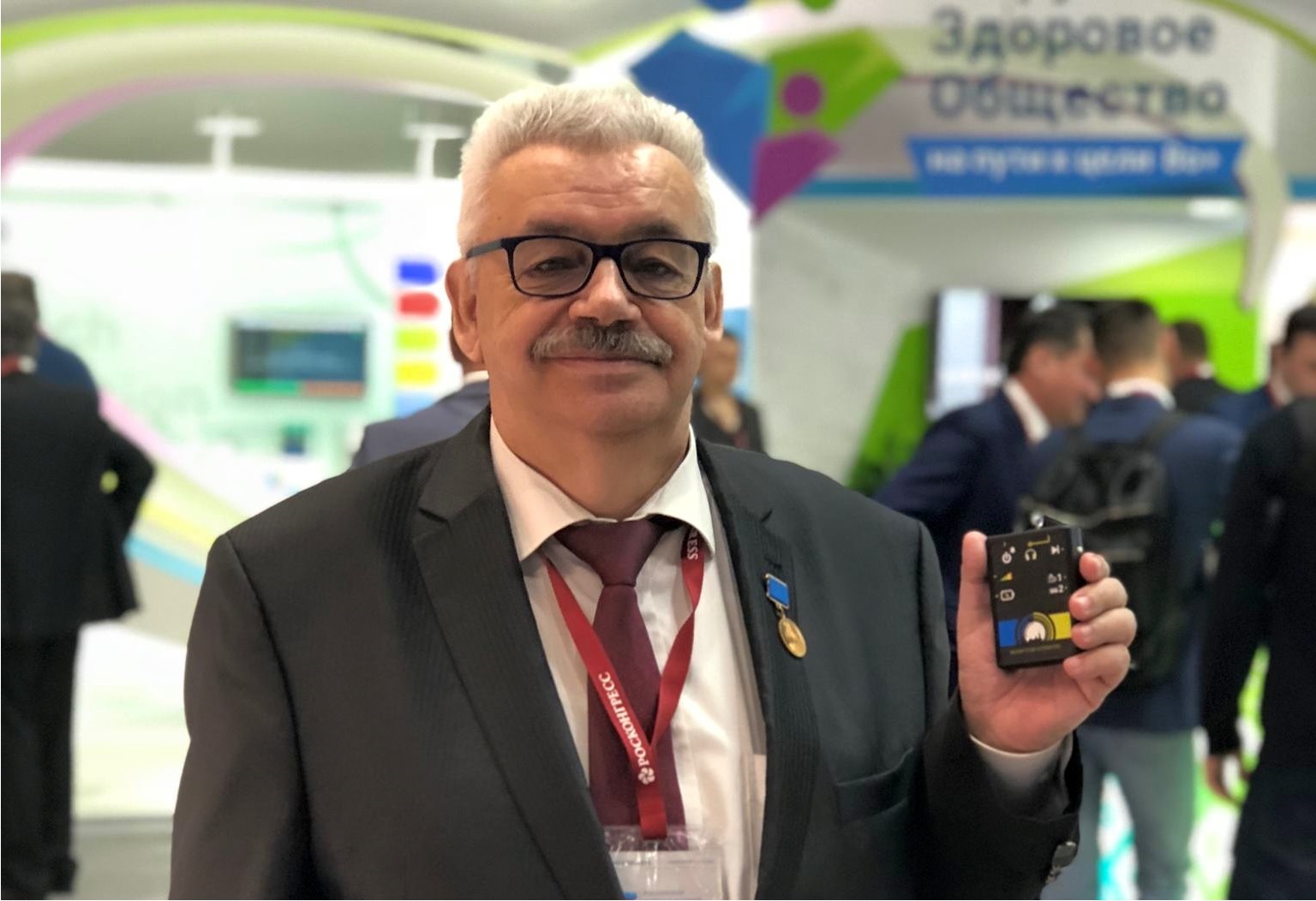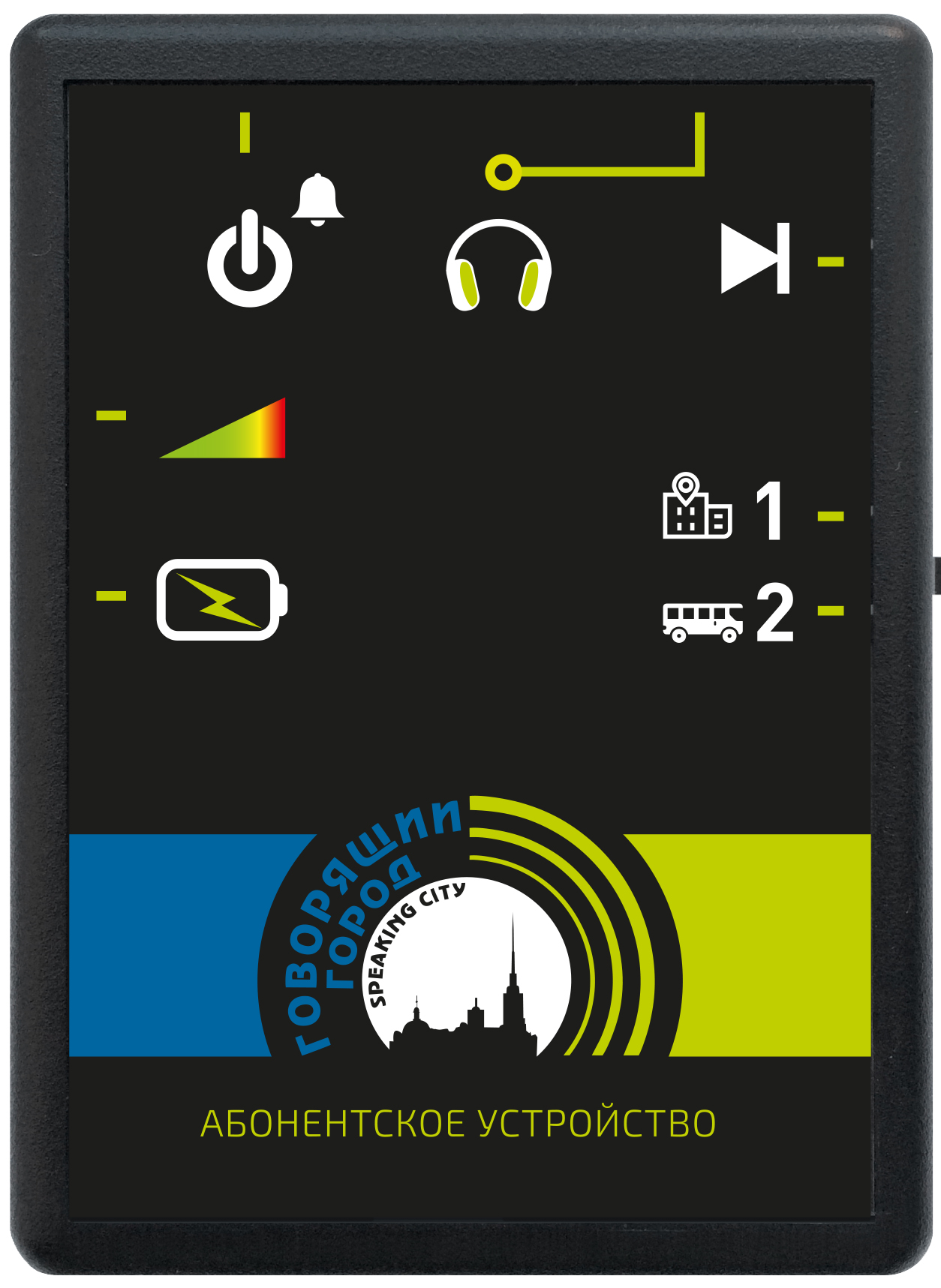Technology for the smart city. Will St. Petersburg become the first metropolis convenient for the blind?
Imagine a system that can provide navigation for people with disabilities within the whole metropolis. Going down the subway, confidently walking through an unfamiliar area, orienting yourself at the train station and even catch a regular bus without the help of a guide - for many blind people this seems to be something unbelievable. But there are developers in Russia who are turning the dream of millions of blind people into reality right now.

St. Petersburg can be safely called not only the Northern capital, but also the capital of accessibility for people with visual impairments. Indeed, it is here that the Speaking City system is most widely used, which allows blind people to confidently navigate the city’s infrastructure.
Using special subscriber devices or a mobile application, a blind or visually impaired person can find a stop and use public transport, walk around important city objects or confidently cross the road to a green traffic light.
All this was made possible thanks to the introduction of the Talking City system. It was developed by engineers from the St. Petersburg company "Spetstekhnopribor" with the support of the local organization of the blind.
How does this system work?

The idea is simple: a radio transceiver and the required number of sound beacons are installed at important objects of urban infrastructure. They transmit the signal to the subscriber’s device or smartphone of the user, reporting the location inside or relative to the object. And they also transmit other necessary information - the current status of the traffic light and the direction of movement, the number of the approaching bus and even indicate the doors as soon as they open for boarding.
The user simply receives a signal in the form of a voice message in which all the data is spoken as accurately as possible.
The technology is simple at first glance - the Talking City project uses standard Bluetooth Low Energy, Wi-Fi protocols and interactive radio communications in the allowed frequency range. But the algorithm for using these technologies is completely original and represents a unique author’s solution. It is the software part of the complex that provides reliable interaction of infrastructure equipment with user devices. In particular, the system is designed in such a way that users do not need an Internet connection, since all the information they receive is in radio transceivers.

The main idea of the developers is to make available the existing urban infrastructure. And to equip any object with a navigation system, it is enough to install a radio transceiver and sound beacons on it. “Talking City” does not require large investments and time costs.
The concept of the project arose more than 10 years ago when people with visual disabilities, representatives of the All-Russian Society for the Blind (OSI), turned to the developers. They talked about the difficulties that they face when moving independently around the city. This was especially true for urban transport.
How to determine without using vision - what type of transport came to a stop? Where is he going and where is the front door? In an attempt to answer these questions, the engineers of Spetstekhnopribor took up the development of the project.

The first equipment samples were created in 2009-2010. And already in 2011 in St. Petersburg, the Talking City system was equipped with 85 trolleybuses, 15 buses, as well as a number of buildings and intersections along the way from the nearest metro station to the central office of the regional VOS organization.
A little later, to increase the accuracy of the data on the route number and direction of movement, a remote control for the driver was added to the on-board equipment, from which you can enter the necessary information. Modern versions of the remote control also notify the driver about the approach of a blind passenger to the vehicle, which allows you to show more attention when boarding and disembarking.

Over the past eight years, "Talking City" has been actively introduced in many regions of the country. To date, in St. Petersburg, all metro stations, more than 2,300 buses, trams and trolleybuses, 2,500 traffic lights and more than 400 objects at railway stations are equipped with the system. Also, St. Isaac's Cathedral, the Shostakovich Academic Philharmonic Society, the Museum of Political History, the Museum of Musical Comedy, the State Library for the Blind and Visually Impaired, the St. Petersburg Pharmacy Network, as well as hospitals, shopping centers and many other facilities are also equipped with navigation systems for the blind.
Today, Talking City has already been introduced in 18 regions of Russia. Nevertheless, the project is not developing as fast as the developers would like. Most visually impaired people cannot use the Talking City on their usual routes. At the federal level, the introduction of such systems is not regulated in any way. Although the use of such technologies meets the objectives of the State Program “Accessible Environment”.
From the outside it may seem that there are not so many visually impaired people - we really rarely see them on the street. But in fact - more than a million blind people live in Russia. And the urban environment is least adapted specifically for them. “ Talking City ” aims to fix this - equip the entire infrastructure of public transport, city communications and socially significant objects of the country with information and orientation systems for the blind.
Only when every city speaks can blind Russians feel what it means to be truly free and not depend on the help of others.

St. Petersburg can be safely called not only the Northern capital, but also the capital of accessibility for people with visual impairments. Indeed, it is here that the Speaking City system is most widely used, which allows blind people to confidently navigate the city’s infrastructure.
Using special subscriber devices or a mobile application, a blind or visually impaired person can find a stop and use public transport, walk around important city objects or confidently cross the road to a green traffic light.
All this was made possible thanks to the introduction of the Talking City system. It was developed by engineers from the St. Petersburg company "Spetstekhnopribor" with the support of the local organization of the blind.
How does this system work?

The idea is simple: a radio transceiver and the required number of sound beacons are installed at important objects of urban infrastructure. They transmit the signal to the subscriber’s device or smartphone of the user, reporting the location inside or relative to the object. And they also transmit other necessary information - the current status of the traffic light and the direction of movement, the number of the approaching bus and even indicate the doors as soon as they open for boarding.
The user simply receives a signal in the form of a voice message in which all the data is spoken as accurately as possible.
The technology is simple at first glance - the Talking City project uses standard Bluetooth Low Energy, Wi-Fi protocols and interactive radio communications in the allowed frequency range. But the algorithm for using these technologies is completely original and represents a unique author’s solution. It is the software part of the complex that provides reliable interaction of infrastructure equipment with user devices. In particular, the system is designed in such a way that users do not need an Internet connection, since all the information they receive is in radio transceivers.

The main idea of the developers is to make available the existing urban infrastructure. And to equip any object with a navigation system, it is enough to install a radio transceiver and sound beacons on it. “Talking City” does not require large investments and time costs.
The concept of the project arose more than 10 years ago when people with visual disabilities, representatives of the All-Russian Society for the Blind (OSI), turned to the developers. They talked about the difficulties that they face when moving independently around the city. This was especially true for urban transport.
How to determine without using vision - what type of transport came to a stop? Where is he going and where is the front door? In an attempt to answer these questions, the engineers of Spetstekhnopribor took up the development of the project.

The first equipment samples were created in 2009-2010. And already in 2011 in St. Petersburg, the Talking City system was equipped with 85 trolleybuses, 15 buses, as well as a number of buildings and intersections along the way from the nearest metro station to the central office of the regional VOS organization.
A little later, to increase the accuracy of the data on the route number and direction of movement, a remote control for the driver was added to the on-board equipment, from which you can enter the necessary information. Modern versions of the remote control also notify the driver about the approach of a blind passenger to the vehicle, which allows you to show more attention when boarding and disembarking.

Over the past eight years, "Talking City" has been actively introduced in many regions of the country. To date, in St. Petersburg, all metro stations, more than 2,300 buses, trams and trolleybuses, 2,500 traffic lights and more than 400 objects at railway stations are equipped with the system. Also, St. Isaac's Cathedral, the Shostakovich Academic Philharmonic Society, the Museum of Political History, the Museum of Musical Comedy, the State Library for the Blind and Visually Impaired, the St. Petersburg Pharmacy Network, as well as hospitals, shopping centers and many other facilities are also equipped with navigation systems for the blind.
Today, Talking City has already been introduced in 18 regions of Russia. Nevertheless, the project is not developing as fast as the developers would like. Most visually impaired people cannot use the Talking City on their usual routes. At the federal level, the introduction of such systems is not regulated in any way. Although the use of such technologies meets the objectives of the State Program “Accessible Environment”.
From the outside it may seem that there are not so many visually impaired people - we really rarely see them on the street. But in fact - more than a million blind people live in Russia. And the urban environment is least adapted specifically for them. “ Talking City ” aims to fix this - equip the entire infrastructure of public transport, city communications and socially significant objects of the country with information and orientation systems for the blind.
Only when every city speaks can blind Russians feel what it means to be truly free and not depend on the help of others.
All Articles